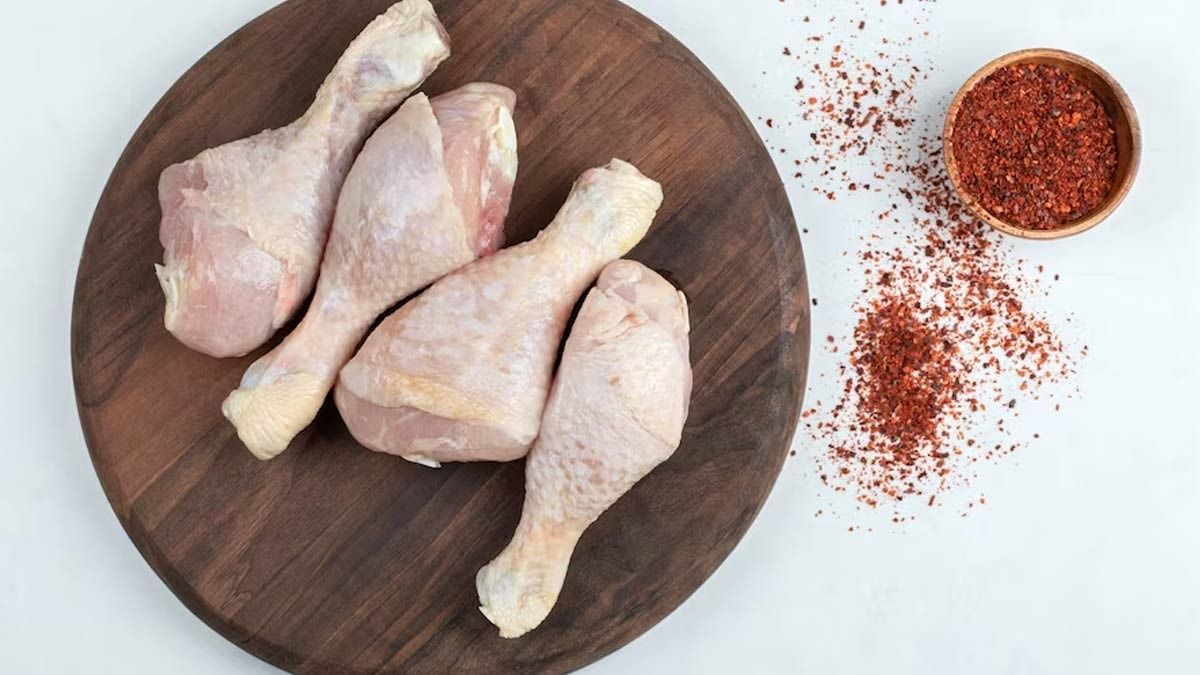Are Chicken Legs Healthy? Here’s What You Should Know
When it comes to choosing protein sources, chicken often tops the list for health-conscious individuals. But while chicken breast is widely praised for its lean profile, chicken legs—including thighs and drumsticks—are often misunderstood. Some avoid them for their higher fat content, while others swear by their rich flavor and satisfying texture. So, what’s the truth?
Let’s break down the chicken leg nutrition, compare it to white meat, and explore the health benefits of chicken legs—plus the best ways to cook them to retain maximum nutrients.
What Exactly Are Chicken Legs?
Chicken legs refer to the drumsticks and thighs, which make up the dark meat portion of the bird. Unlike chicken breast (white meat), dark meat contains more myoglobin, a protein that carries oxygen to the muscles. This gives chicken legs their darker color and richer taste.
At HappyLyfe, we offer clean, high-quality poultry options like:
- Free Range Chicken Legs
- Free Range Baby Chicken
- Free Range Chicken Green Label
Chicken Leg Nutrition: A Closer Look
Here’s the nutritional breakdown per 100g of skinless cooked chicken leg (thigh + drumstick):
- Calories: ~175
- Protein: ~22g
- Fat: ~9g
- Iron: ~0.9 mg
- Zinc: ~2.7 mg
- Vitamin B6: ~0.3 mg
- Selenium: ~22 mcg
Key Nutritional Highlights:
- High in Protein: Great for muscle repair and maintenance
- Good Source of Iron & Zinc: Supports energy levels and immune function
- Contains Healthy Fats: Especially beneficial when sourced from free-range chickens
Health Benefits of Chicken Legs
Despite common misconceptions, chicken legs can be a healthy part of your diet, especially when prepared properly and sourced from responsible farms. Here’s why:
1. Rich in Nutrients
Chicken legs contain more iron, zinc, and B vitamins compared to chicken breast. These nutrients are crucial for immunity, energy production, and cell repair.
2. Higher Fat Content = More Satiety
While they do have more fat than white meat, the fat helps you feel full longer, reducing the likelihood of overeating—especially useful for those practicing intermittent fasting or on low-carb diets.
3. Supports Muscle Growth
With ~22g of protein per 100g, chicken legs provide high-quality, complete protein—making them suitable for muscle building and post-workout meals.
4. Better for Some Cooking Methods
Dark meat is less likely to dry out, which makes it ideal for grilling, roasting, or stewing. It retains its moisture and flavor, even when cooked without oil or heavy sauces.
Chicken Legs vs. Chicken Breast: Which Is Healthier?
Are Chicken Legs Good for Weight Loss and Muscle Building?

Yes, absolutely—especially when skinless and cooked with minimal oil. The protein in chicken legs helps build lean muscle and supports metabolism. While higher in fat, the type of fat found in chicken legs (especially from free-range sources) includes healthy monounsaturated fats that can promote satiety.
For weight loss:
- Bake or grill without the skin
- Avoid breading or frying
- Pair with fiber-rich veggies for a balanced plate
For muscle gain:
- Leave a bit of the natural fat intact
- Pair with complex carbs like quinoa or brown rice for post-workout meals
Best Ways to Cook Chicken Legs Without Losing Nutrients
1. Grilling
Locks in flavor without extra fat. Marinade beforehand using lemon, garlic, and herbs for extra nutrients.
2. Baking or Roasting
Preserves moisture and allows excess fat to drip away. Use a wire rack for even cooking.
3. Slow Cooking
Great for nutrient retention. Add bone-in chicken legs to stews or broths to increase collagen intake.
4. Air Frying
A healthier way to achieve crispy skin without deep-frying.
Avoid:
- Heavy breading or deep-frying
- Sauces high in sugar or sodium
The Importance of Sourcing: Go Free Range
Not all chicken is created equal. Free-range chicken legs contain better fat profiles, more nutrients, and fewer antibiotics. At HappyLyfe, our poultry products are:
- Ethically raised
- Hormone-free
- Naturally fed
Explore:
Choosing clean, ethically raised meat is just as important as the cut you choose.
Conclusion
So, are chicken legs healthy? Yes—when sourced responsibly and cooked right, they’re a nutrient-rich, protein-packed, and flavorful part of a balanced diet. Don’t be afraid of the fat in chicken legs—it comes with essential nutrients like iron, zinc, and vitamin B6 that your body needs. Whether your goal is weight loss, muscle gain, or simply better nutrition, chicken legs can play a delicious and wholesome role in your meals.
Choose free-range options from HappyLyfe to ensure you’re getting clean, ethical, and nutrient-dense poultry every time because health starts with quality ingredients.
5 Frequently Asked Questions
1. Are chicken legs good for weight loss and muscle building?
Yes. Chicken legs provide high-quality protein essential for muscle growth and contain fats that help with satiety. Opt for skinless, baked, or grilled versions to support weight loss goals.
2. How do chicken legs compare nutritionally to chicken breast?
Chicken legs have slightly more calories and fat but offer more iron, zinc, and flavor. Both are healthy options depending on your dietary needs.
3. Are chicken drumsticks healthy compared to white meat?
Yes. While drumsticks have more fat, they are nutrient-dense and can be part of a balanced, healthy diet—especially when sourced from free-range chickens.
4. What are the pros and cons of eating chicken legs regularly?
Pros: Nutrient-dense, rich flavor, better satiety.
Cons: Higher in fat, may not suit very low-calorie diets if not prepared properly.
5. What’s the healthiest way to cook chicken legs?
Grilling, baking, or air-frying are the healthiest cooking methods. Avoid frying and opt for skinless cuts when reducing fat intake.

 English
English
 Thai
Thai